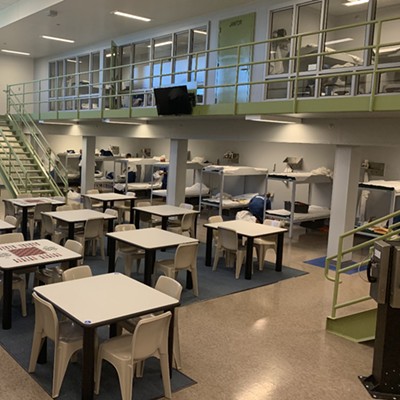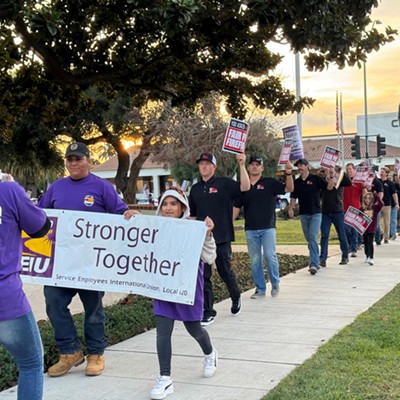The president of Santa Maria Valley Railroad loved trains as a kid, but never laid a penny on the track to watch a locomotive flatten it.
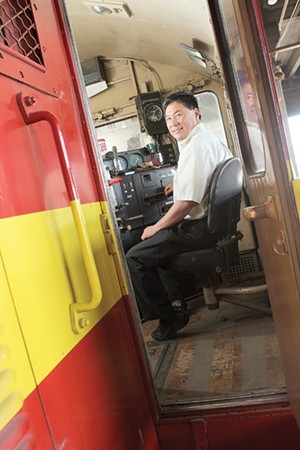
“Most of the time they just fly off,” he explained.
Such no-nonsense practicality is the driving force behind management at the railroad, led by Robert Himoto, a man with a vision. He sees the railroad becoming a critical component of Central Coast freight and industry, an integral part of Santa Maria Valley’s economy, and a profitable business for its owners.
Despite his future-gazing, as a child fascinated by trains, he never envisioned himself working with them.
“At the time, there was no money in it, so it was kind of discouraged,” he remembered with a laugh.
Times have changed—and so has the railroad economy. Freight shipping by rail has seen an increase in popularity thanks to recent economic conditions and mounting fuel costs.
“With trucking prices continuing to rise, we’re getting a lot of traffic back from trucking,” Himoto said.
The railroad also often offers bulk savings to customers because they’re working with larger quantities, he explained.
Ken Beard of the California Shortline Railroad Association said that after the rail industry experienced some flat times during the late 1990s, it picked up as diesel prices began to hover around $5 a gallon.
“For the same gallon of gas, we can haul three to four times what a truck can,” Beard said.
He said that in the last two to three years, railroads have seen an increase in the amount of freight being shipped by existing customers, as well as an increase in customers who weren’t previously shipping with rail.
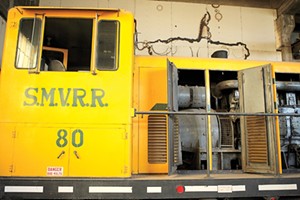
Despite rising popularity in rail transportation overall, in the Santa Maria Valley, the railroad doesn’t have the recognition that it once had in its heyday, Himoto said.
“Because a lot of it is on the west side of town, a lot of people don’t see it, but it’s a critical part of the community,” Himoto said.
Currently, the shortline railroad serves several Santa Maria customers, saving them more than $1.5 million in shipping costs for the year, he said.
The railroad operates three locomotives—two GE 70-ton locomotives and a newer EMD-GP 9, which is rated at 1,350 horsepower. Built in the 1950s, the 70-ton locomotives are considered first-generation diesel locomotives and rated at 60 horsepower. They are two of only about 24 left in California still in working condition, Himoto said.
The engines travel SMVRR’s 14 miles of main line track, which is rated to transport 286,000 pounds. Last year, SMVRR transported more than 2,900 truckloads of freight, mostly for industrial, lumber, and produce companies, because of the railroad’s top-of-the-line machine shop, built in the 1920s. The railroad offers contract locomotive and railcar repair and track repair. It even boasts the same steam locomotive equipment left over from the 1920s when the railroad was one of the busiest in the country.
The railroad hauls freight to Guadalupe, connecting the cars with the Union Pacific Railroad. From there, Union Pacific takes the freight to several points across the country.
But what the railroad does now is small potatoes compared to the days when it was the main source of transportation for hauling oil, asphalt, and fresh produce.
Before Himoto, there was another man—and another plan for the railroad.
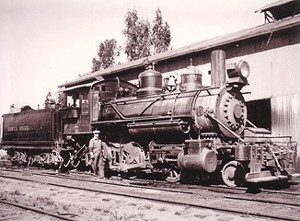
The railroad was built in 1911 by an English oil syndicate to transport oil and asphalt from Roadamite, near Sisquoc, to Guadalupe. At the time, a lot of foreign countries were investing in oil in the United States, according to Hal Madson, author of Railroads of the Santa Maria Valley, Three California Railroads—Three Different Gauges.
Then the asphalt refineries quit producing around the 1920s and the Santa Maria Railroad fell on some hard times, going into bankruptcy around 1925.
That’s when Capt. G. Allan Hancock stepped in. His family owned the Rancho La Brea land grant, including its oil and much of the Wilshire District in Los Angeles. He came to Santa Maria with the idea of developing the valley. In the ’20s, he started an experimental crop irrigation program on a 400-acre farm, raising corn and alfalfa. The acreage was later expanded to include more than 5,000 acres.
When he purchased SMVRR, Hancock developed a 29-mile system of railroad right-of-way and tracks. He provided for an engine shop that was one of the best and well equipped in the country.
“He was able to invest all kinds of money that would otherwise be unavailable,” Madson said.
He proceeded to build several businesses that supported the railroad—including several vegetable shippers and Rosemary Farm—and essentially developed the east end of Santa Maria.
“He had the ability to look into the future and just see what people were going to need,” said Richard Chenoweth, museum director at the Santa Maria Historical Society Museum.
Eventually Hancock turned the railroad into one of the busiest and best-equipped railroads in the nation. In 1925, the year Hancock bought the railroad, more fresh vegetable shipments would originate from the Santa Maria Valley than from any other shipping point in the country. By May of 1927, Santa Maria was among the nation’s top fresh produce shippers. By the 1930s, it was one of the most profitable rail lines west of the Mississippi, Himoto said.
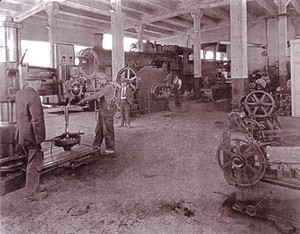
In August of 1948, the first General Electric 70-ton diesel electric locomotive arrived. Five more diesel engines showed up between 1948 and 1952. Hancock, who favored the steam locomotive, held on to his, and SMVRR was one of the last railroads in the West to run steam locomotives. It wasn’t until 1962 that Hancock retired his favorite locomotive, No. 21. On Feb. 24 of that year, Hancock took the throttle to ride No. 21 on its last run. That day, Walt Disney, a good friend of Hancock’s, joined him for the occasion. Soon after, the railroad would slip into decline.
Throughout the 1970s and ’80s, SMVRR continued to haul sugar beets and was a large oil shipper. But when oil production stopped and the Holly Sugar plant closed in 1993, the railroad suffered a major blow. The Rosemary Trust took full control of the railroad in 2000. In 2006, Coast Belle Rail Corporation purchased SMVRR from the Hancock Family, and Himoto hopped aboard.
Now, two of the railroad’s three locomotives sit in the engine room off of McClelland Street. In the back of the engine room sit massive lathes and an air compressor left over from the 1920s, when they were used for steam locomotives. The equipment still works, but Himoto said that he hopes to sell it to offset some costs in upgrading the rail lines.
Overall, Himoto credits Hancock’s foresight for the shape of the railroad today.
“So here it is, the Depression, and he’s got this thing cranked up,” Himoto said. “He really invested in the railroad, and he invested in companies that fed into it. He was a real visionary.”
Himoto hopes to see the railroad grow to some semblance of what it once was.
“Hopefully, if we get the potential industries out here, it could be a high production railroad once again,” he said.
Potential industries include a proposed ethanol plant that’s looking at locating in the Betteravia area. Himoto said that large manufacturing plants are often designed around rail, taking advantage of its efficiency to stay competitive—especially if they make products that can’t physically be trucked. Such plants can, in turn, bring in jobs.
Madson said that he believes the railroad has the potential to attract more companies that will create more-higher paying jobs.
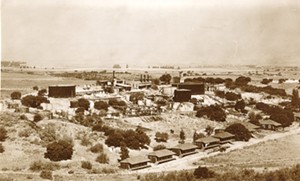
“The more people we have making a better income would help make the community more affluent,” he said.
For his part, Himoto is trying to make such a vision a reality. He’s got plans for the railroad to both bring it up to his standards and to grow the business. In addition to replacing the tracks, he’ll soon be moving the engine house and rail yard, which sits on land he leases from the Hancock family.
He pointed to the nearby public streets and an adjacent baseball field while he talked about the future. He said that the railroad will soon be moving the rail yard somewhere that’s not so open to the public, which should help cut down on trespassers and locomotive street crossings, as well as put the rail yard closer to customers on the west side. Being that much closer will also cut down on fuel expenses.
“Of course there will be a fuel savings, not having to go that much further with a light load,” Himoto explained.
A new location will also help in another area Himoto wants to grow the railroad: transloading. Companies will be able to combine trucking and rail for their freight, essentially shipping their freight by rail to Santa Maria and then, once at the railroad, loading it onto trucks to be delivered throughout the Central Coast.
That’s the future Himoto sees. For the time being, he’s busy working on his railroad, laying down tracks for what was once a shining example of industry in the Santa Maria Valley. Those tracks, he hopes, will take the community there once again.
INFOBOX: History in the making
To learn more about the SMVRR’s history or Capt. G. Allan Hancock, visit the Santa Maria Historical Society Museum at 616 S. Broadway or buy a copy of Hal Madson’s Railroads of the Santa Maria Valley, Three California Railroads—Three Different Gauges, available at the SMVRR or The Bookworm.
Arts Editor Shelly Cone can do the locomotion. She can be contacted at [email protected].


